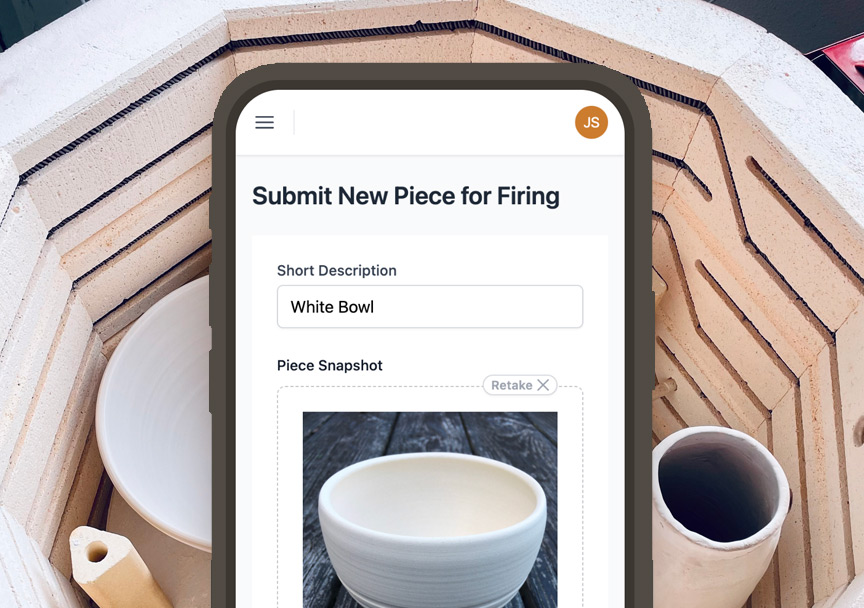Odd-shaped little pyrometric cones are in every ceramics studio, placed carefully inside kilns before firing. What is the purpose of these cryptic objects? Let's shed some light on the science behind pyrometric cones and why they are indispensable for accurate ceramic firing.
What is a Pyrometric Cone?
A pyrometric cone, also called an Orton cone, is a small triangular or pyramid-shaped indicator made of ceramic material. Pyrometric cones are designed to deform and bend at specific high temperatures when placed inside a kiln. This makes them a visual indicator that firing has reached the intended heat work.
Pyrometry refers to the measurement of high temperatures. So pyrometric cones scientifically help gauge the temperature inside a hot kiln. They are indispensable tools for precisely controlling the firing process.
The Composition of Pyrometric Cones
While shaped like tiny sculptures, pyrometric cones are carefully engineered from ceramic compounds. Their composition causes the cones to react predictably under rising heat in the kiln.
Most cones consist of glass formers, fluxes, opacifiers, and binders:
- Glass formers like silica provide structure
- Fluxes like feldspar cause melting when heated
- Opacifiers give the cone its color
- Binders hold the mixture together
The compounds are blended in specific ratios calibrated to soften and bend at certain temperatures. The cones visually signal when critical heatwork is achieved during firing.
The Role of Pyrometric Cones in Firing
Pyrometric cones have three essential functions in monitoring kiln firings:
- Temperature indicators - The bending of the cone signals a particular temperature is reached in the kiln
- Calibrators - Cones confirm thermocouples and kiln controllers are accurately measuring temperature
- Heatwork measures - Cones respond to the total time and temperature, not just peak temp
Cones provide a fail-safe for firing accuracy not possible with thermocouples alone. They account for variabilities in kilns and atmosphere that impact results.
Reading Pyrometric Cones After Firing
Pyrometric cones are placed standing upright, tip pointing up before firing begins. As the kiln heats up, the glass-forming compounds in the cone start to soften and melt. The weight of the cone causes it to droop and bend slowly.
The amount of bending indicates the heatwork experienced by the cone during the firing:
- Unused - Cone is unchanged, tip pointing up. Temperature not reached
- Fired - Cone bent slightly but still upright. Ideal heatwork achieved
- Overfired - Cone bending more than 45 degrees. Too much heatwork
- Melted - Cone slumped into a pool. Drastically overfired
The more the cone has deformed from its original shape, the hotter the kiln reached during the firing.
The Different Temperatures of Pyrometric Cones
Pyrometric cones are produced in a range of carefully calibrated temperature ratings. The cones are numbered from 022 to 14, covering a wide span of firing temperatures.
For example:
- Cone 06 - 2165°F
- Cone 6 - 2232°F
- Cone 10 - 2381°F
The cone numbering system seems illogical but is based on the old Seger cone values. Each cone has a precisely corresponding temperature at which it will bend during firing.
Using Multiple Pyrometric Cones
For the most accurate firing control, pyrometric cones are used in combinations:
- One cone of the target temperature
- One cone 2 degrees lower
- One cone 2 degrees higher
Firing until the target cone bends signals the ideal heat work is reached. If lower and higher cones also bend, it indicates a problem with uniformity in the kiln heating.
Using groups of three cones at varying temperatures gives a complete picture of what occurs in all kiln sections during firing.
Advantages Over Thermocouples
Kilns are equipped with thermocouples that constantly measure temperature digitally during firing. So why not rely solely on the thermocouple reading?
Pyrometric cones provide a reality check on thermocouples for several reasons:
- Cones measure total heat work, not just a temperature snapshot
- Cones indicate if there are cooler or hotter zones in the kiln
- Cones are unaffected if the thermocouple fails or drifts
- Cones can be physically examined after firing for visual confirmation
Tips for Using Pyrometric Cones
Follow these best practices when using pyrometric cones:
- Place cones at least 1 inch apart so they do not touch
- Position cones pointing up and angled slightly away from each other
- Set cones on stilts or cone packs to prevent falling over
- Ensure visibility through peepholes or open ports
- Double-check the cone number and temperature rating
When used properly, pyrometric cones take the mystery and anxiety out of firing by verifying temperatures are on target every time.
So those little multi-shaped sculptures play an outsized role in ensuring successful glaze outcomes and properly fired clay bodies. Pyrometric cones take the guesswork out of heat work.


